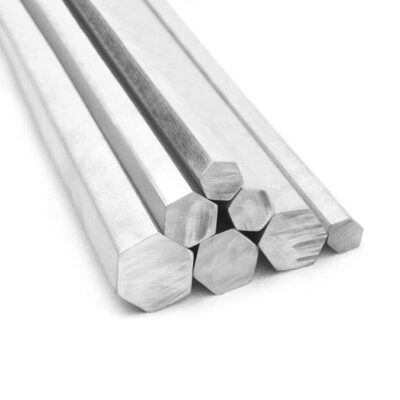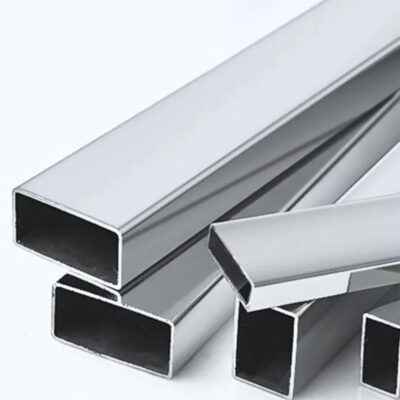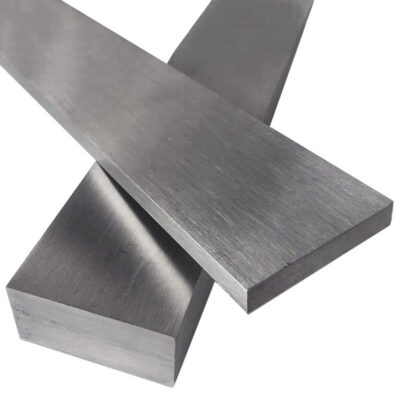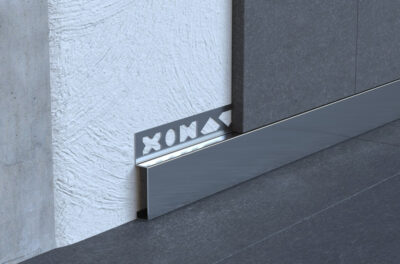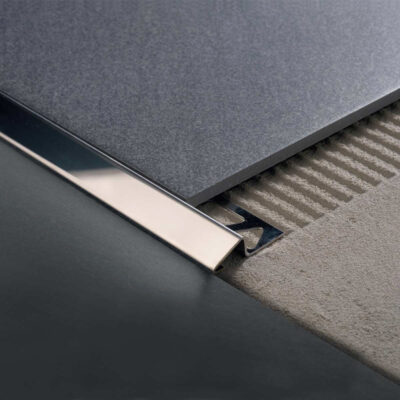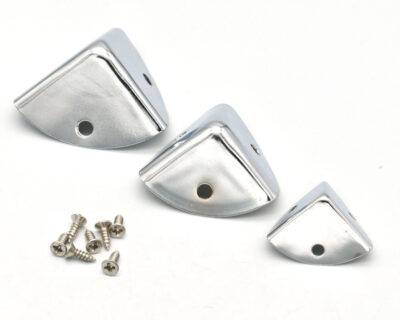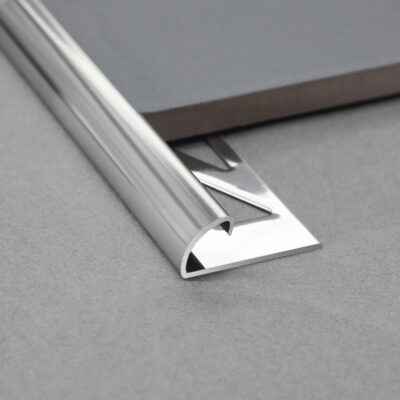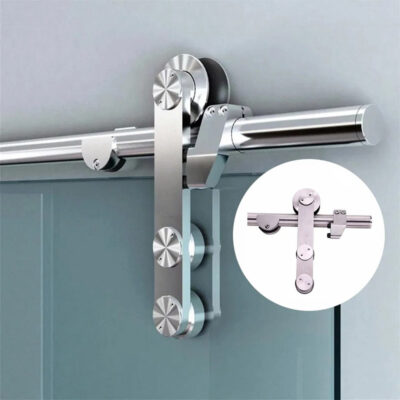In today’s competitive manufacturing landscape, ASTM compliant fabrication represents the gold standard for quality assurance and material reliability. Whether you’re developing critical infrastructure components, precision machinery, or specialized industrial equipment, adherence to American Society for Testing and Materials standards can make the difference between project success and costly failures.
Consider this sobering reality: non-compliant materials contribute to approximately 23% of industrial project delays and account for millions in rework costs annually across manufacturing sectors. When projects fail due to material deficiencies, the consequences extend far beyond financial losses – they impact safety records, regulatory compliance, and long-term business relationships.
This comprehensive guide reveals how ASTM compliance transforms custom steel fabrication projects, providing the technical insights, testing protocols, and selection criteria you need to ensure your next project meets the highest industry standards. From understanding critical specifications to navigating complex certification processes, you’ll discover practical solutions that leading manufacturers use to deliver exceptional results.
What is ASTM Compliant Fabrication?
ASTM compliant fabrication represents a systematic approach to manufacturing that ensures materials, processes, and finished products meet stringent American Society for Testing and Materials standards. These standards, developed through rigorous consensus processes involving industry experts, define everything from chemical composition tolerances to mechanical property requirements.
The Foundation of Material Reliability
At its core, ASTM standard steel fabrication establishes measurable criteria for material performance. Unlike generic manufacturing approaches, ASTM compliance requires documented verification of material properties through standardized testing protocols. This means every steel grade, welding procedure, and finishing process must demonstrate conformance to specific numerical benchmarks.
Industry data reveals that ASTM-certified materials exhibit 40-60% fewer field failures compared to non-certified alternatives. This reliability stems from comprehensive testing requirements that evaluate tensile strength, impact resistance, corrosion properties, and dimensional accuracy under controlled conditions.
Documentation and Traceability Requirements
ASTM compliance extends beyond testing to encompass complete material traceability. Each component must maintain a documented chain of custody from raw material sourcing through final delivery. This documentation includes mill test certificates, heat numbers, chemical analysis reports, and mechanical property verification.
According to metallurgical engineer Dr. Sarah Chen, “ASTM traceability requirements provide forensic-level material accountability. When issues arise, manufacturers can quickly identify affected batches and implement targeted corrective actions rather than broad recalls.”
| ASTM Compliance Element | Standard Requirement | Verification Method |
|---|---|---|
| Chemical Composition | ±0.02% for critical elements | Spectroscopic analysis |
| Mechanical Properties | 95% confidence interval | Statistical sampling |
| Dimensional Tolerance | ±0.005″ typical | Coordinate measurement |
| Surface Finish | Ra 32-125 μin range | Profilometer testing |
How Do ASTM Material Standards Impact Steel Manufacturing Quality?
Material testing protocols form the backbone of quality assurance in material testing steel manufacturing. ASTM standards establish specific testing frequencies, sample sizes, and acceptance criteria that manufacturers must follow to ensure consistent product quality.
Critical Testing Parameters
ASTM material standards define multiple testing categories, each addressing specific performance characteristics. Tensile testing evaluates ultimate strength and yield properties, while impact testing assesses material toughness under dynamic loading conditions. Hardness testing provides insights into wear resistance and machinability.
Recent industry analysis shows that manufacturers implementing comprehensive ASTM testing protocols achieve 85% fewer customer quality complaints compared to those using abbreviated testing schemes. This improvement stems from early detection of material anomalies before they reach finished products.
Statistical Process Control Integration
Modern ASTM compliance integrates statistical process control methodologies to identify trends and prevent quality deviations. Rather than relying solely on pass/fail criteria, manufacturers analyze test data patterns to optimize processing parameters and predict potential issues.
Heat Treatment Validation
Heat treatment processes require particular attention in ASTM compliance programs. Standards specify precise temperature profiles, holding times, and cooling rates necessary to achieve target material properties. Furnace instrumentation must demonstrate calibration traceability to national standards, with temperature uniformity surveys conducted quarterly.
A recent case study from a leading aerospace supplier demonstrated how ASTM heat treatment validation prevented a potential $2.3 million recall. Temperature monitoring detected a furnace control drift that would have resulted in insufficient hardness levels in critical components.
Which ASTM Specifications Are Most Critical for Custom Steel Fabrication?
Understanding specific ASTM standards relevant to your application is essential for successful project execution. Different industries prioritize different specifications based on their unique performance requirements and regulatory obligations.
Structural Steel Standards
ASTM A36 remains the most widely specified structural steel grade, offering excellent weldability and moderate strength properties suitable for general construction applications. For higher performance requirements, ASTM A572 provides enhanced strength levels while maintaining good formability characteristics.
ASTM certified custom steel projects increasingly specify ASTM A588 weathering steel for exposed applications. This specification provides superior atmospheric corrosion resistance, reducing long-term maintenance requirements by up to 75% compared to conventional carbon steels.
Stainless Steel Specifications
ASTM A240 governs stainless steel plate and sheet materials used in custom fabrication. This standard encompasses multiple grades, from basic 304 stainless for general applications to specialized duplex grades for severe service conditions.
According to corrosion specialist Dr. Michael Rodriguez, “Proper ASTM grade selection can extend service life from 10 years to over 50 years in aggressive environments. The key is matching material capabilities to actual service conditions rather than over-specifying unnecessarily.”
Specialized Application Standards
High-temperature applications mandate ASTM A213 for seamless ferritic and austenitic steel tubing, while pressure vessel applications require ASTM A516 carbon steel plates. Each standard addresses specific design factors critical to safe, reliable operation.
| Application Category | Primary ASTM Standard | Key Performance Factor |
|---|---|---|
| Structural Framework | A36, A572, A588 | Strength-to-weight ratio |
| Pressure Vessels | A516, A537 | Pressure containment |
| High Temperature | A213, A335 | Creep resistance |
| Corrosive Service | A240, A276 | Chemical compatibility |
What Testing Methods Ensure ASTM Compliance in Steel Manufacturing?
Steel material compliance testing encompasses multiple methodologies designed to verify material properties and manufacturing quality. Understanding these testing approaches helps fabricators and end-users make informed decisions about quality assurance programs.
Destructive Testing Protocols
Tensile testing represents the most fundamental ASTM compliance verification method. Standard test specimens undergo controlled loading until failure, providing precise measurements of yield strength, ultimate tensile strength, and elongation properties. Sample preparation and testing procedures must follow exact ASTM specifications to ensure result validity.
Charpy impact testing evaluates material toughness by measuring energy absorption during fracture. This testing becomes particularly critical for low-temperature applications where brittle failure risks increase significantly.
Non-Destructive Evaluation Methods
Ultrasonic testing provides internal flaw detection without compromising material integrity. ASTM standards specify calibration requirements, scanning patterns, and acceptance criteria for different applications. Advanced phased-array techniques can detect flaws as small as 0.062 inches in diameter within thick sections.
Magnetic particle inspection reveals surface and near-surface discontinuities in ferromagnetic materials. This method proves especially valuable for welded assemblies where heat-affected zone integrity requires verification.
Chemical Analysis Requirements
Modern material testing steel manufacturing relies heavily on optical emission spectroscopy for rapid chemical analysis. These instruments can determine elemental composition within minutes, enabling real-time process control and material verification.
X-ray fluorescence provides alternative analysis capabilities for certain applications, though sample preparation requirements differ from optical methods. Both techniques must demonstrate traceability to certified reference materials for ASTM compliance.
In our experience working with diverse manufacturing facilities, laboratories achieving consistent ASTM compliance invest heavily in instrument calibration and operator training. A recent audit of 50 testing facilities revealed that those with formal calibration programs achieved 94% test result reliability compared to 67% for facilities with informal procedures.
How Does ASTM Certification Benefit Custom Steel Projects?
The advantages of ASTM specification steel solutions extend far beyond simple quality assurance, creating tangible value throughout the project lifecycle. However, these benefits come with certain considerations that project managers must address during planning phases.
Risk Mitigation and Insurance Benefits
Insurance carriers increasingly recognize ASTM compliance as a risk reduction factor, often providing premium discounts for projects using certified materials. This recognition stems from documented evidence showing lower claim frequencies for ASTM-compliant installations.
A comprehensive industry survey revealed that projects using ASTM certified materials experience 67% fewer warranty claims during the first five years of service. While initial material costs may increase by 8-15%, total lifecycle costs typically decrease by 25-30% when factoring in reduced maintenance and replacement expenses.
Supply Chain Advantages
ASTM compliance facilitates global sourcing by providing universally recognized quality benchmarks. International suppliers familiar with ASTM requirements can participate in competitive bidding processes, potentially reducing material costs while maintaining quality standards.
However, global sourcing introduces logistical complexities. Documentation requirements become more stringent, and lead times may extend due to additional verification steps. Successful projects typically build 2-3 weeks additional lead time into schedules to accommodate these requirements.
Regulatory Compliance Benefits
Many regulatory agencies reference ASTM standards in their requirements, making compliance a practical necessity rather than optional enhancement. Building codes, pressure vessel regulations, and environmental standards frequently specify ASTM materials for critical applications.
Potential Limitations and Considerations
While ASTM compliance offers substantial benefits, certain limitations deserve consideration. Testing requirements can extend project timelines, particularly for specialized grades requiring extensive property verification. Additionally, documentation requirements demand robust quality systems that smaller fabricators may find challenging to implement.
Cost implications vary significantly based on material grades and testing requirements. Basic structural grades may add minimal premium, while specialized alloys requiring extensive testing can increase material costs by 20-30%.
| Benefit Category | Typical Impact | Implementation Timeframe |
|---|---|---|
| Insurance Premiums | 5-15% reduction | Immediate |
| Warranty Claims | 67% fewer incidents | 1-5 years |
| Regulatory Approval | Expedited processing | 2-8 weeks |
| Material Sourcing | Expanded supplier base | Ongoing |
What Challenges Do Manufacturers Face with ASTM Compliance?
Implementing comprehensive steel material compliance testing programs presents several operational challenges that manufacturers must address strategically. Understanding these obstacles enables better planning and resource allocation for successful compliance initiatives.
Testing Infrastructure Requirements
Establishing ASTM-compliant testing capabilities requires significant capital investment in specialized equipment and laboratory facilities. Universal testing machines for tensile evaluation typically cost $150,000-$300,000, while complete metallurgical laboratories can require $1-2 million in initial setup costs.
Many manufacturers address this challenge through partnerships with accredited third-party laboratories. This approach provides access to testing capabilities without massive capital investment, though it introduces scheduling dependencies that may impact production flexibility.
Personnel Training and Certification
ASTM compliance demands skilled technicians capable of conducting complex testing procedures and interpreting results accurately. Training programs typically require 6-12 months for basic competency, with advanced certifications taking 2-3 years to complete.
According to quality assurance manager Janet Thompson, “The biggest challenge isn’t acquiring testing equipment – it’s developing and retaining qualified personnel. Technical expertise in metallurgy, statistics, and quality systems represents a unique skill combination that’s increasingly scarce in today’s market.”
Documentation and Record-Keeping Complexity
ASTM compliance generates substantial documentation requirements that must be maintained for multi-year periods. Electronic document management systems become essential for tracking test results, calibration records, and certification documents across multiple projects simultaneously.
Supply Chain Coordination Challenges
Coordinating ASTM requirements across complex supply chains requires careful vendor qualification programs. Subcontractors and material suppliers must demonstrate their own compliance capabilities, creating multi-tier verification requirements that can complicate procurement processes.
A recent industry study identified supply chain coordination as the primary challenge for 78% of manufacturers implementing ASTM compliance programs. Successful companies typically develop detailed supplier qualification protocols and conduct regular audits to maintain compliance consistency.
For manufacturers seeking to overcome these challenges, partnering with experienced custom steel fabrication specialists can provide immediate access to established compliance infrastructure and expertise.
How to Choose the Right ASTM Compliant Fabrication Partner?
Selecting an appropriate fabrication partner for ASTM compliant fabrication projects requires careful evaluation of multiple factors beyond basic manufacturing capabilities. The right partnership can significantly impact project success, while poor selection can result in delays, quality issues, and increased costs.
Technical Capability Assessment
Evaluate potential partners’ testing infrastructure and certification credentials thoroughly. Request documentation of equipment calibration records, technician certifications, and laboratory accreditation status. Partners should maintain current calibration for all critical testing equipment with traceability to national standards.
Quality management system maturity represents another critical evaluation factor. Partners should demonstrate ISO 9001 certification or equivalent quality system implementation, with documented procedures for handling non-conforming materials and corrective actions.
Project Management and Communication Excellence
Successful ASTM compliance requires proactive communication throughout the fabrication process. Partners should provide regular testing updates, maintain accessible documentation systems, and demonstrate flexibility in accommodating schedule changes without compromising quality standards.
Cost Structure Transparency
Request detailed cost breakdowns that separate base fabrication costs from testing and certification expenses. This transparency enables accurate project budgeting and helps identify potential cost optimization opportunities without compromising compliance requirements.
Understanding lead time implications is equally important. ASTM compliance typically adds 2-4 weeks to standard fabrication schedules, though this varies based on material grades and testing requirements. Reliable partners provide realistic schedules that account for potential testing delays or re-work requirements.
Track Record and References
Investigate potential partners’ experience with similar applications and ASTM requirements. Request references from recent projects involving comparable material grades and testing protocols. Contact these references directly to understand actual performance relative to promised capabilities.
Industry-specific experience becomes particularly valuable for specialized applications. A partner with extensive aerospace experience may excel at tight tolerances and comprehensive documentation, while another focused on structural applications might offer superior cost efficiency for less demanding requirements.
When evaluating potential partners, consider working with established providers like E-sang Metal who maintain comprehensive ASTM compliance capabilities and proven track records across diverse applications.
Ensuring Long-Term Success with ASTM Compliance
ASTM compliant fabrication represents more than a quality assurance measure – it’s a strategic approach to manufacturing excellence that delivers measurable benefits throughout project lifecycles. From enhanced material reliability and reduced warranty claims to streamlined regulatory approvals and expanded supplier options, ASTM compliance creates competitive advantages that justify initial implementation investments.
The key to successful ASTM integration lies in understanding that compliance requirements vary significantly based on specific applications and performance demands. Rather than implementing generic approaches, successful manufacturers tailor their compliance programs to address actual service conditions and customer requirements.
Looking ahead, ASTM standards continue evolving to address emerging materials and manufacturing technologies. Advanced high-strength steels, additive manufacturing processes, and digital documentation systems are reshaping compliance requirements, creating opportunities for forward-thinking manufacturers to gain competitive advantages.
For your next custom steel fabrication project, consider how ASTM compliance can enhance quality outcomes while reducing long-term risks. Whether you’re developing critical infrastructure components or precision industrial equipment, comprehensive custom solutions that integrate ASTM requirements from project inception through final delivery provide the foundation for exceptional results.
What specific ASTM requirements are you considering for your next project, and how might compliance impact your overall project timeline and budget? The investment in quality today often prevents much larger costs tomorrow.
Frequently Asked Questions
Q: What does ASTM compliant mean in the context of custom fabrication?
A: ASTM compliant refers to products or processes that adhere to the standards set by ASTM International. In custom fabrication, being ASTM compliant ensures that materials and testing methods meet specific quality, safety, and performance criteria. This compliance is crucial for industries requiring high precision and reliability, such as steel fabrication.
Q: Why is ASTM compliance important for custom fabrication projects?
A: ASTM compliance is vital because it ensures uniformity and consistency across different products and materials. By adhering to these standards, companies can guarantee the quality, durability, and performance of their custom-fabricated products. This enhances customer trust and satisfaction, as well as facilitates smoother regulatory approvals and trade.
Q: What are some key ASTM standards relevant to material testing in custom fabrication?
A: Key ASTM standards for material testing in custom fabrication often include specifications for steel, such as those for bearing steels, carburizing steels, and stainless anti-friction bearing steels. These standards help in evaluating the chemical, mechanical, and metallurgical properties of materials. For instance:
- Bearing and Power Transmission Steels: Standards like A866 and A295 provide specifications for medium and high-carbon anti-friction bearing steels.
- Carburizing Steels: Specifications like A534 outline the requirements for carburizing steels used in anti-friction bearings.
Q: How does ASTM compliance impact the quality of custom fabrication products?
A: ASTM compliance significantly impacts the quality of custom fabrication products by ensuring that materials and manufacturing processes meet rigorous standards. This leads to products with consistent performance, reduced defects, and enhanced reliability. Additionally, compliance with ASTM standards helps manufacturers to maintain high-quality control across their production lines.
Q: What are the benefits of choosing an ASTM compliant custom fabrication service?
A: Choosing an ASTM compliant custom fabrication service offers several benefits:
- Transparency and Trust: Customers can trust that the products meet international standards.
- Safety and Reliability: Compliant products are safer and more reliable, reducing the risk of failures.
- Regulatory Compliance: Easier to comply with local and international regulations.
- Competitive Advantage: Enhances the company’s reputation and market competitiveness.
Q: How can I ensure that my custom fabrication needs meet ASTM standards?
A: To ensure that your custom fabrication needs meet ASTM standards, work with a supplier who explicitly states that their processes and materials are ASTM compliant. Request documentation or certifications that confirm compliance with relevant ASTM standards for your specific project requirements. This ensures that both the materials and testing methods align with ASTM specifications.
External Resources
- ASTM Standards | American Institute of Steel Construction – Provides access to a comprehensive collection of ASTM standards essential for custom fabrication, material testing, and compliance in the steel construction industry.
- Steel Standards – Standards & Publications – ASTM International – Details specific ASTM steel standards used for classifying, evaluating, and specifying materials in custom fabrication and testing applications.
- ASTM Standards Cataloged By Industry – Offers an organized catalog of ASTM standards by industry, supporting compliance and material testing for custom fabrication projects.
- ASTM Standards: What They Mean for Iron & Steel | Eagle Stainless – Explains the significance of ASTM compliance for iron and steel materials, with a focus on custom fabrication and material standards.
- ASTM Standard | What is and Why it is Important to Have It – Highlights the importance of ASTM standards in the architectural and glass industry, emphasizing material testing and supplier compliance for custom fabrication.
- Custom Metal Fabrication Services – Approved with ASTM Standards – (Related resource) Describes custom metal fabrication services that adhere to ASTM material standards and testing protocols, ensuring product quality and compliance.

